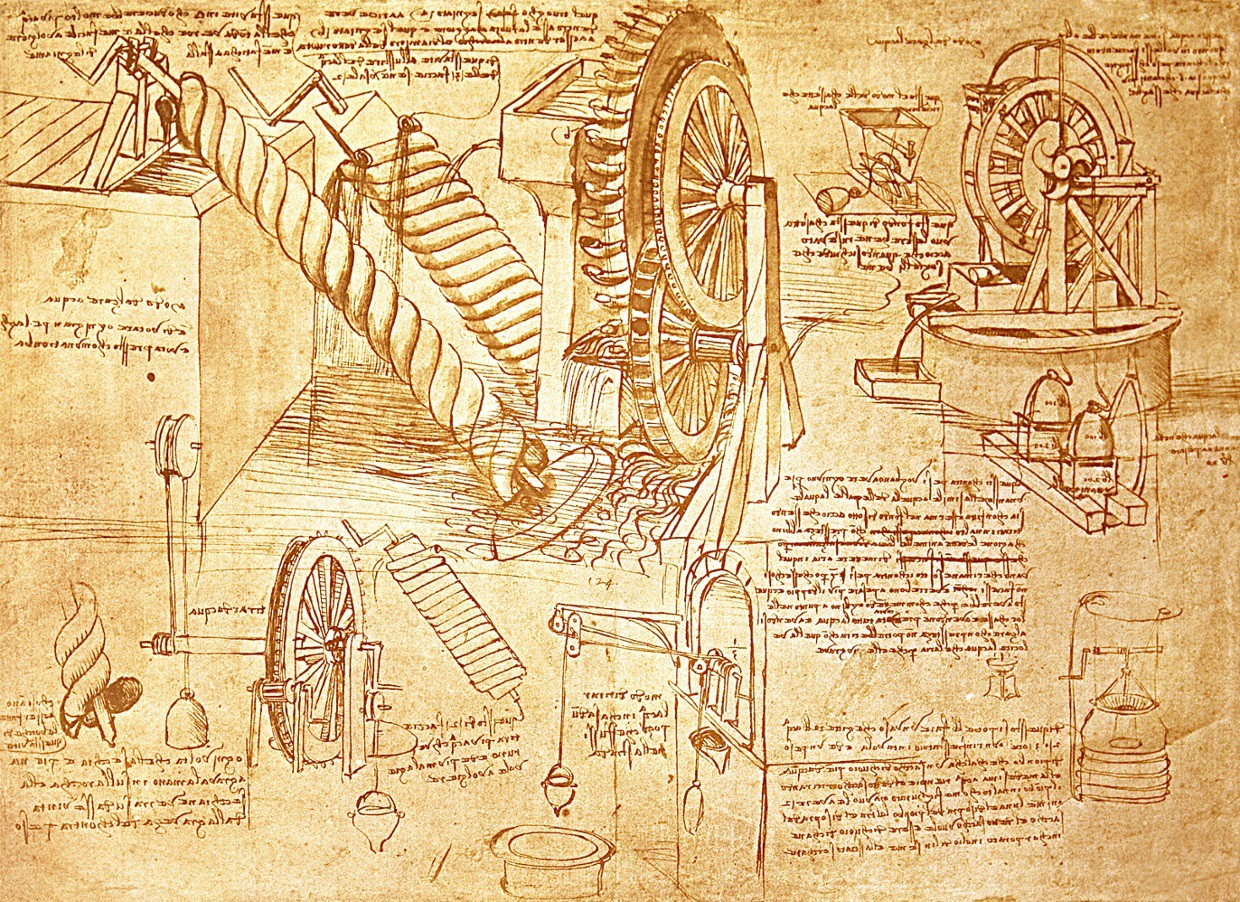In 15th Centaury Europe, the world was becoming a smaller place. At this point: towns, cities and villages had all been linked with basic infrastructure allowing new information to circulate to different parts seamlessly. Many technological and scientific inventions discovered in 15th century Europe are considered foundational to what our world is built on today. One figure however, is responsible for numerous of these creations that features throughout the end of this century. This figure is known as Leonardo Da Vinci.
Leonardo di ser Piero da Vinci was born in 1452 in the republic of Florence. He spent his early life as an apprentice of a local artist Andrea di Cione. During his upbringing, he was exposed to numerous creative and practical activities such as chemistry, metal working, leather working, mechanics, painting and sculpting. Six years later Leonardo became a qualified artist and doctor of medicine. We believe that his healthy early life is responsible for his vast future success and is an example of the Pygmalion Effect.
A Famous Sketch from Leonardo's Studies

The Pygmalion effect is a powerful cognitive psychology discovery that can result in high levels of individual performance. It is a psychological phenomenon where high external expectations placed on an individual lead to high performance. The inverse of this is the Golem effect where low expectation leads to low levels of performance. It is likely that during Leonardo’s early years as an apprentice, he was captivated in a highly engaging learning environment. If the Pygmalion effect is responsible for creating one of the world’s finest inventors, then it is arguably one of the most powerful tools that exists on an individual level.
See Feldman’s Journal of Educational Psychology below, the Pygmalion Effect.
Throughout Leonardo’s life, he discovered and crafted numerous inventions including the parachute, a mock design of a helicopter and is widely considered one of the greatest painters of all time. He is also renowned for his studies in human anatomy. How was one person capable of such high levels of achievement in such a variety of different disciplines?
The answer to this is simple. Leonardo was described as an individual of "unquenchable curiosity" (Gardner, Helen, 1970). His "feverishly inventive imagination" is what was responsible for one single man discovering a vast amount of technological advancements during the Renaissance Era. This creative motivation is immensely powerful – and it exists in everyone and anyone alive today. This curiosity is seen consistently throughout human history and remains a core piece of what makes us Human. From Adam and Eve’s story of tasting the forbidden apple to the creation of Alan Smith’s Wealth of Nations – curiosity plays a foundational role in their creation and ideology.
When we look at organizational strategy today, curiosity is what advances things forward. The result of curiosity is either creativity or creative destruction – which are arguably two sides of the same thing. When Apple cultivated the iPhone, it was their curiosity in the consumer market that lead them to the design of a phone that would sell over 1 billion units. When Leonardo Da Vinci painted the Mona Lisa, his extraordinary curiosity of Lisa Gherardini’s facial features lead to the most successful art painting in existence. A question remains however, why are there no Leonardo da Vincis in today’s world?
To end the topic and answer this question on the power of curiosity, technological developments have led to both constructive and destructive mental consequences. One constructive consequence is that we can now access a vast amount of information instantly through the internet. The downside remains that due to the vast amount of information available before us every day, we have developed a much shorter concentration timespan. Perhaps that is an advantage that Leonardo da Vinci possessed that human kind may never possess again. Perhaps it was his ability to focus so intensely on tasks before him for hours on end, and without distraction. Maybe this is the key that led him to his discoveries. The answer however, is: we may never truely know.
Works Cited
Feldman, Robert S.; Prohaska, Thomas (1979). "The student as Pygmalion: Effect of student expectation on the teacher". Journal of Educational Psychology
Gardner, Helen (1970). Art through the Ages. pp. 450–56.
Smith, Adam, 1723-1790. The Wealth of Nations / Adam Smith ; Introduction by Robert Reich ; Edited, with Notes, Marginal Summary, and Enlarged Index by Edwin Cannan. New York :Modern Library, 2000. Print.